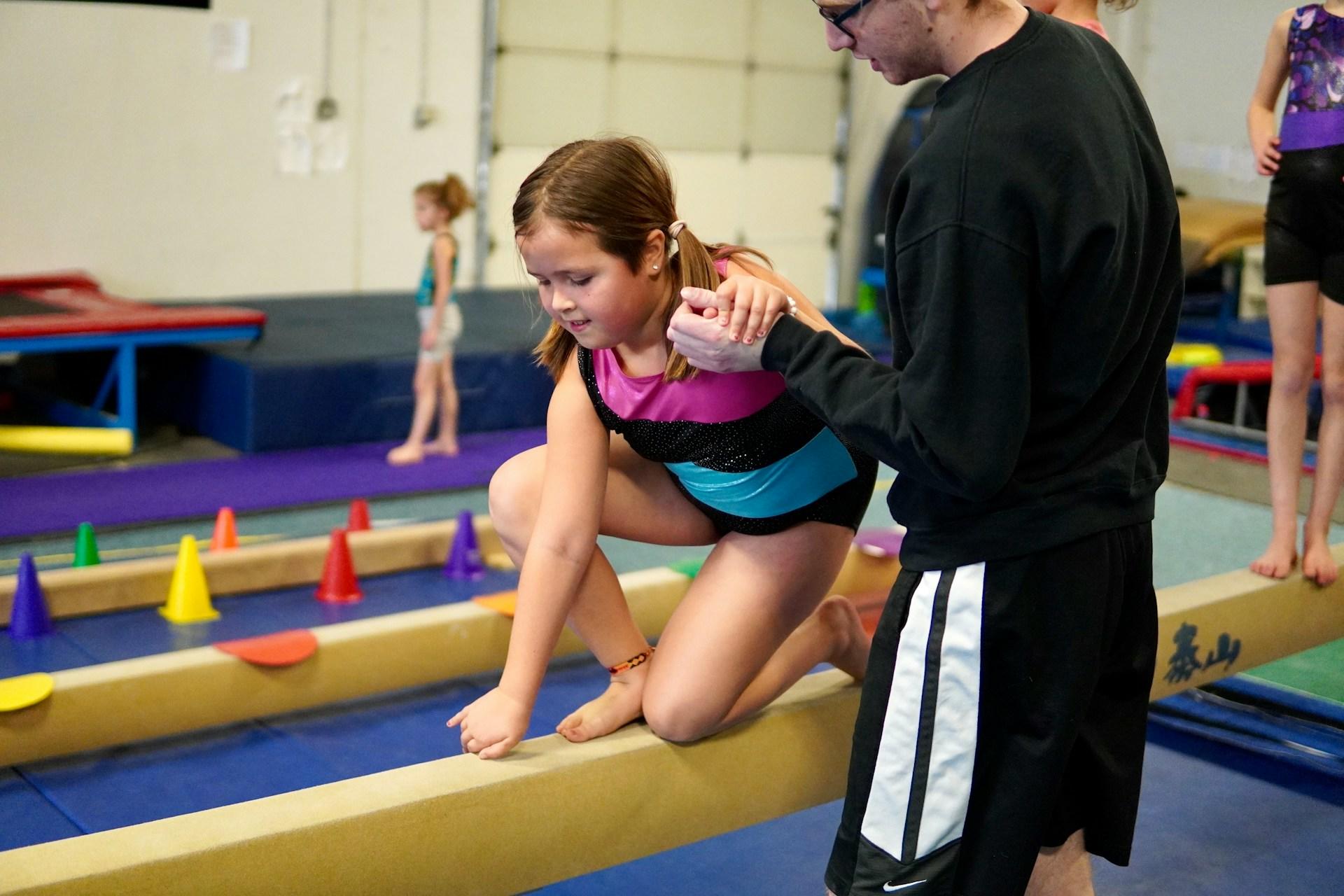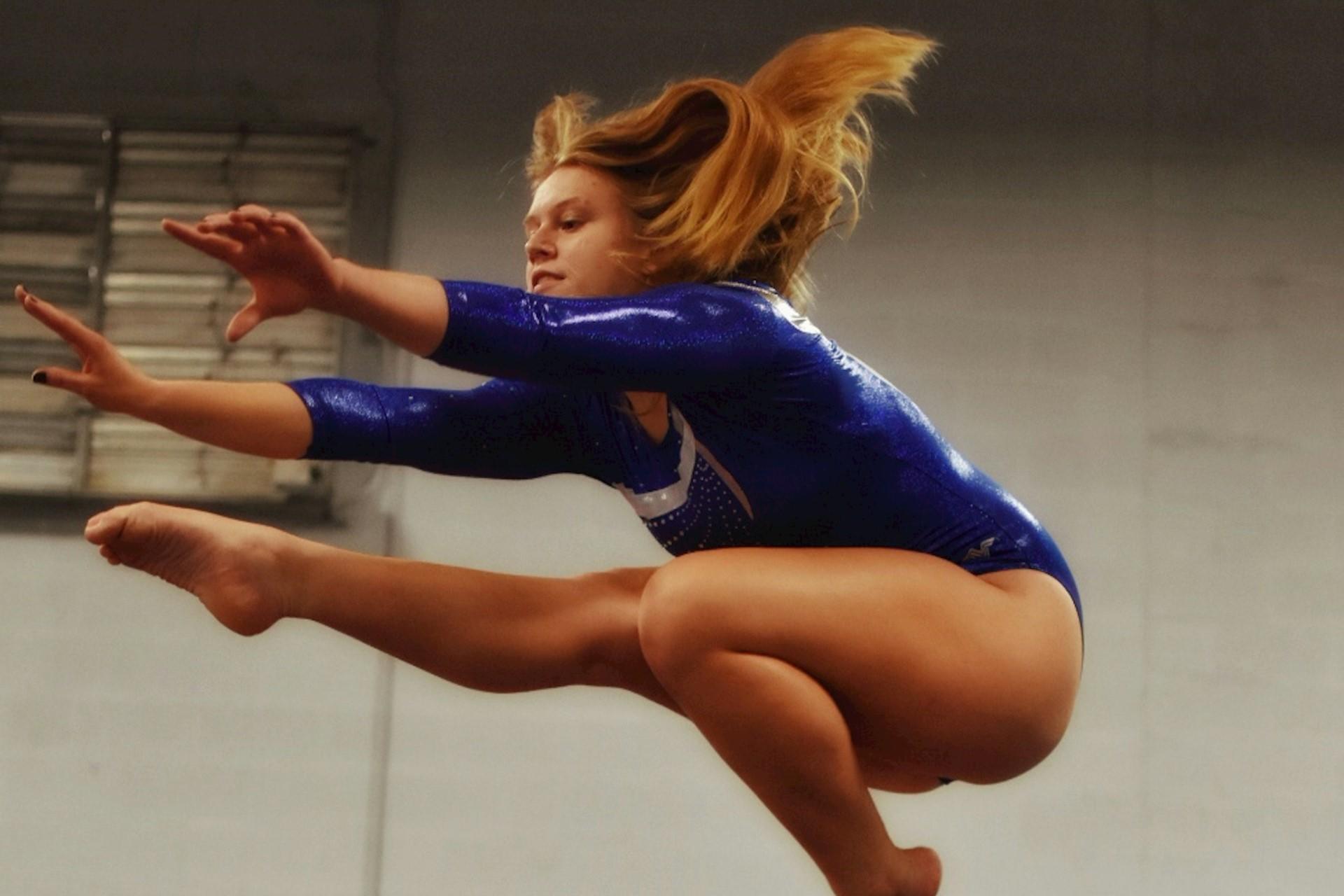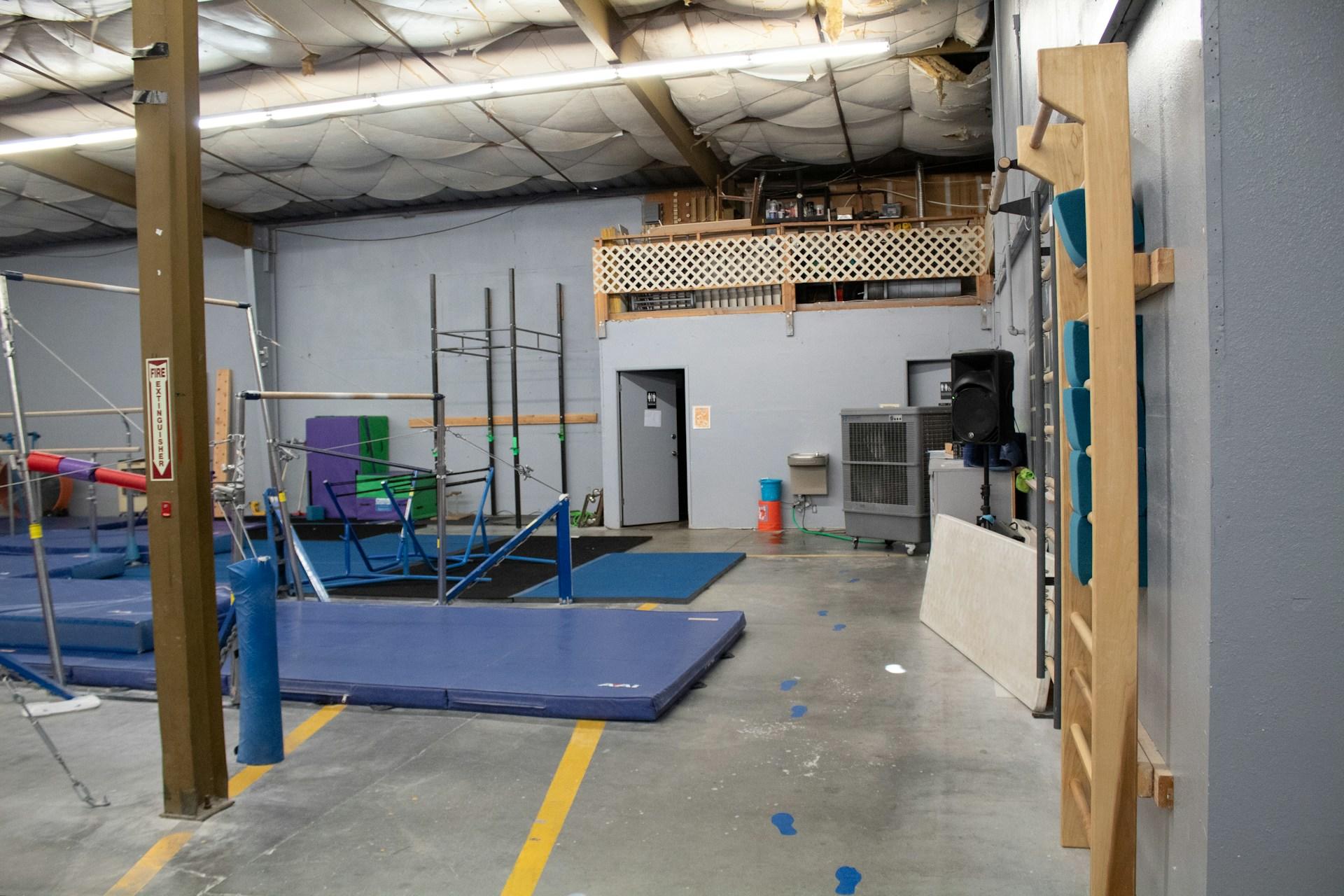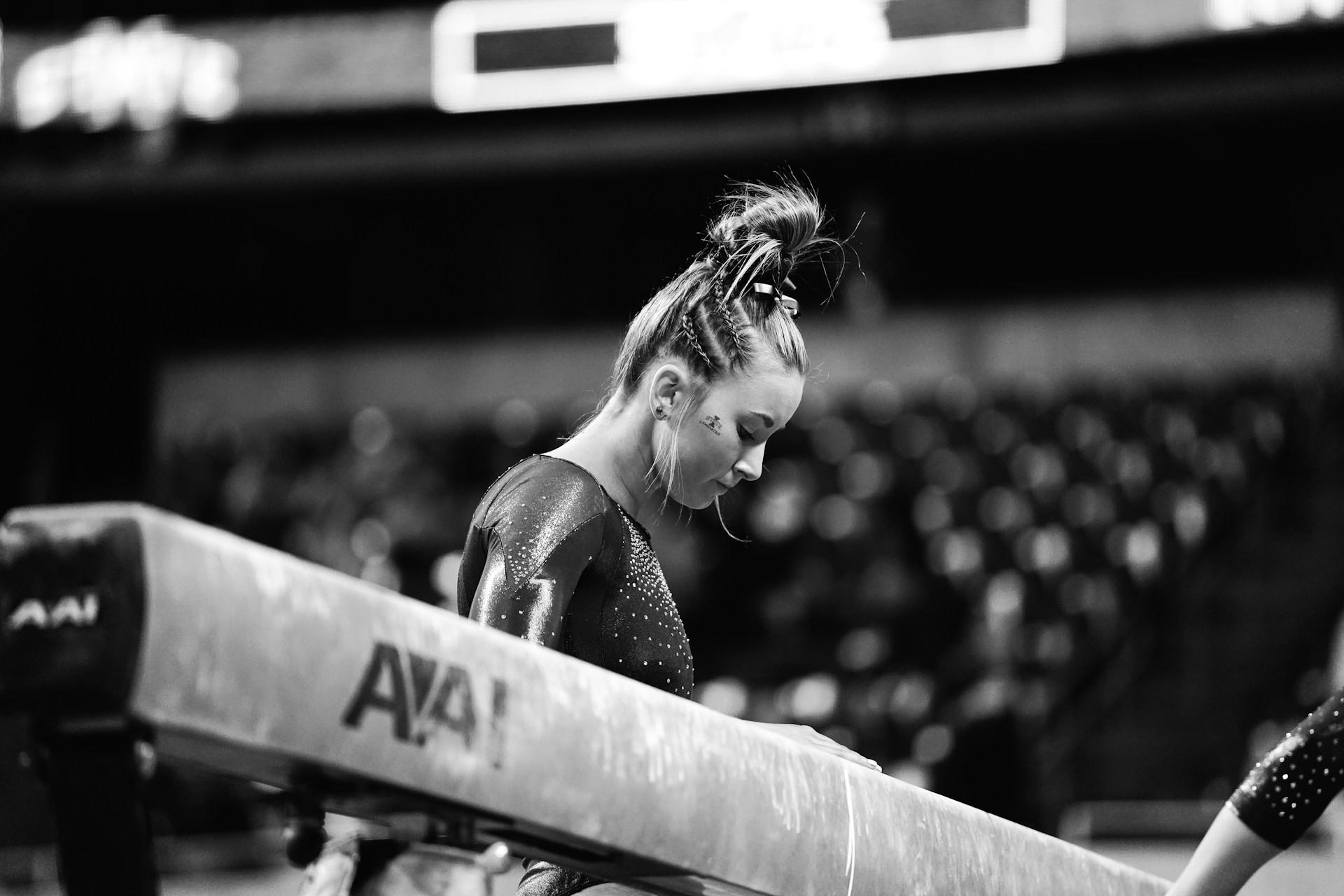It can be a fairly inaccessible sport for those outside of the world of gymnastics. However, with the Olympic Games coming up in Paris, we'll all have another opportunity to fall in love with gymnastics for a few weeks and, hopefully, a lifetime.

Gymnastics at the Olympic Games
Gymnastics first appeared in the Olympic Games in Germany in 1896. At the time, there were 8 events just for men: horizontal bar, parallel bars, pommel horse, rings, and vault.
In 1900, in France, there was just one event: all-around (individual). For a few years, there was a range of different men's gymnastic events that are no longer part of the modern games.
Past Men's Gymnastic Events
- Rope climbing
- Club swinging
- Horizontal bar (team)
- Parallel bars (team)
- Free system (team)
- Swedish system (team)
- Combined
- Triathlon
- Indian clubs
- Sidehorse vault
- Tumbling
Until the 1928 Olympic Games in Amsterdam, only men participated in gymnastics. Then, women were allowed to compete in artistic gymnastics. This marked a significant milestone in the sport's history, opening up opportunities for women to showcase their skills and contribute to its development.
Initially, this only involved the all-around (team) event, but other events were added over time, including the all-around (individual), balance beam, floor exercise, uneven bars, and vault.
At the 2024 Olympic Games in Paris, France, fourteen artistic gymnastics events will be held, eight for men and six for women.
Current Men's Olympic Artistic Gymnastics Events
- All-Around (Individual)
- All-around (Team)
- Floor Exercise
- Pommel Horse
- Rings
- Vault
- Parallel Bars
- Horizontal Bar
Current Women's Olympic Artistic Gymnastics Events:
- All-Around (Individual)
- All-around (Team)
- Vault
- Uneven Bars
- Balance Beam
- Floor Exercise
Olympic gymnastics events
Olympic gymnastics events
Today, we'll focus on the women's gymnastics and the balance beam. The balance beam is a significant event in women's gymnastics, requiring a unique combination of strength, balance, and precision. Here's everything you need to know about the event, from its history to the skills and scoring system.
What Is the Balance Beam Event?
Typically, artistic gymnastic events are categorized according to the equipment used. The main equipment used in the beam is the balance beam.
This is a thin beam on legs or a stand at either end.
The Fédération Internationale de Gymnastique (FIG), the governing body behind gymnastics, has established standard measurements for the beam itself.
Standard Balance Beam Measurements
125cm (4.10ft)
500cm (16ft)
10cm (3.9in)
If these numbers mean nothing to you, imagine that the average handspan is around 9 inches for males and 8 inches for females.
Hold your hand out in front of you and spread your fingers. A standard balance beam is likely half the width of your hand!
Beams are typically covered in leather or suede. Initially, these beams were made of wood with no covering. Other materials have been used throughout the event's history. Still, when combined with chalk and beam shoes, the current materials allow for the best movement and purchase on the beam.
While the FIG specifies the height of the beam for events, you'll also see floor versions of the beams, which allow gymnasts to practice without the risk of falling from a height.


The History of the Balance Beam
The beam, along with the all-around (individual), floor exercise, uneven bars, and vault, is an Olympic event that was first introduced in the 1952 Olympic Games in Helsinki, Finland.
The portable apparatus (team) event was also introduced during this Olympiad, but this only made one further appearance at the Olympic Games and was never seen again. All the other events are still seen in the current Olympic Games.
In the early days of the beam, the event focused more on artistry than on a combination of artistry and technical ability.
By today's standards, early beam events might look relatively tame. However, it's fascinating to note that it wasn't until the 1970s and 1980s that the beam was covered in leather or suede and included padding, revolutionizing the sport and making more complicated and dynamic routines possible.
The modern beam event includes dancing, leaping, poses, and acrobatics.
How Are You Scored on the Balance Beam
Balance beam routines, a true test of a gymnast's skill and precision, must include dance elements, a one-foot turn, two acrobatic skills, acrobatic elements in different directions, and a dismount. The whole routine must be under 90 seconds, a challenging feat.
Beam routines are scored according to the values stipulated in the Code of Points. The current Code of Points for the beam is valid for 2022 to 2024.
Each skill is allocated a letter value from A to H, with A the lowest value and H the highest. These values correspond to the difficulty and execution of the skill, with higher values indicating more complex and challenging moves. For example, a simple mount might be assigned an A-value, while a difficult acrobatic skill could be assigned an H-value.
Balance Beam Skills Values
- A = 0.1
- B = 0.2
- C = 0.3
- D = 0.4
- E = 0.5
- F = 0.6
- G = 0.7
- H = 0.8
The skills covered by the Code of Points include mounts, acrobatics, turns, leaps and jumps, and dismounts. Not each type of skill necessarily covers the range of values from A to H.
For example, while dismounts cover a range of points from A-value to H-value, leaps and jumps only go as high as an E-value.
You don't need to be an expert in gymnastics or the beam to see that the double tuck back salto with double twist dismount (H-value) is more complex than the front salto tucked dismount (A-value).

Top Gymnasts Who Excel on the Balance Beam
There have been many incredible gymnasts to have taken to the balance beam and put on fantastic displays.
At the Olympic Games, the following are the most successful medalists on the balance beam.
Simone Biles
Simone Biles's name resonates with excellence in gymnastics. She is not just the most decorated gymnast in history but also the ninth-most successful gymnast at the Olympic games, with an impressive record of four gold, one silver, and two bronze medals.
The beam isn't even her best event. Biles' two bronze medals came on the balance beam. That's just how good she is.
Just watch Biles in action on the balance beam.
Larisa Latynina
Larisa Latynina, a Soviet gymnast, is another hugely successful figure in the sport. She's the most successful gymnast of all time in gymnastics at the Olympic Games, winning 9 gold, 5 silver, and 4 bronze medals at the 1956, 1960, and 1964 Olympic Games, representing the Soviet Union.
Her achievements not only highlight her individual talent but also the Soviet Union's dominance in gymnastics during that era.
She won one silver medal and one bronze medal for the balance beam.
Tamara Manina
Tamara Manina is another Soviet Gymnast. She's the 20th most successful gymnast of all time, and on the beam, she won two silver medals at the 1956 and 1960 Olympic Games.
Shannon Miller
The American Gymnast Shannon Miller is the second-most decorated American gymnast after Biles.
She won a gold medal for the balance beam at the 1996 Atlanta Games and a silver medal at the 1992 Barcelona Games.
Olga Korbut
The Soviet gymnast Olga Korbut won the gold medal for the balance beam at the 1972 Munich Games and the silver medal at the 1976 Montreal Games.
She was also the first athlete inducted into the International Gymnastics Hall of Fame.
Věra Čáslavská
Věra Čáslavská was a Czechoslakian gymnast. She won the gold medal for the balance beam at the 1964 Tokyo Games and the silver medal at the 1968 Mexico City Games.
She's second in terms of Olympic medals in gymnastics, with seven gold medals and four silver medals. Čáslavská never stood on the bottom step of the podium in the three Olympic Games she competed in.
Eva Bosáková
Another Czechoslovakian gymnast, Eva Bosáková, won the gold medal at the 1960 Rome Games and the silver medal at the 1956 Melbourne Games.
This is all made more impressive by the fact that she did this while being teammates with Věra Čáslavská. If either competed at a different time than the other, we could imagine their medal hauls would be even more impressive!
Nadia Comăneci
We can't talk about the balance beam without mentioning Nadia Comăneci. The Romanian gymnast is the only one to have won two gold medals on the balance beam.
She's the fifth most successful gymnast at the Olympic Games, with five gold medals, two silver medals, and three bronze medals.
She won her balance beam gold medals in 1976 at the Montréal Games and 1980 at the Moscow Games.
She was also the first gymnast to earn a perfect 10.0 score at the Olympic Games in Montreal.

Learn Gymnastics with Superprof
Due to the sport's difficulty, you need a coach or a tutor if you'd like to learn gymnastics. Whether you'd like to focus on the balance beam or another discipline in gymnastics, search for what you need coaching on with the Superprof website.
From there, you can browse different coaches' and tutors' profiles, see what they offer, and how much they charge.
With many coaches and tutors offering the first session for free, you can also try a few before choosing the one that's right for you and what you want to learn.
Just search for gymnastics on Superprof today!
















